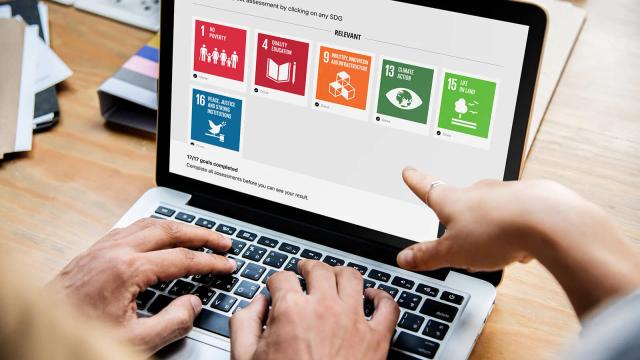Online Tool Shows Impact on the SDGs
The SDG Impact Assessment Tool is a free, online resource for research and educational institutions, companies, entrepreneurs, civic organizations, and public agencies to make self-assessments of impacts on the 17 Sustainable Development Goals (SDGs).
The tool is open for anyone to use and can help you to identify relevant sustainability perspectives of your work in a simple and structured approach. This is done by assessing an object’s impact on each of the 17 SDGs as either direct positive, indirect positive, no impact, indirect negative, direct negative, or more knowledge needed. The tool encourages reflection and collaborative learning of the SDGs and the links between them.
The SDG Impact Assessment Tool already has more than 5000 users around the world (February 2021). By showcasing the tool on the SDSN resource page, the project manager Anders Ahlbäck hopes to reach even more people with the message that a holistic view of the Global Goals is important.
– Today, many businesses spend time mapping and selecting "their" goals in Agenda 2030. With the SDG Impact Assessment Tool, we try to reverse this perspective. The tool offers a structured way to describe a project’s or organization’s impact on the Global Goals, based on the users’ own knowledge. Do we have positive, negative or no impact on a goal? Do we know, or do we lack knowledge? By thinking about these issues, we hope that users at universities, companies, civic organizations, public agencies, and entrepreneurs can strengthen their contributions to Agenda 2030 and the Global Goals for sustainable development.
There are many ways to address the Global Goals and the tool is open and versatile enough to include different approaches. Depending on how the user defines the purpose of the assessment, the tool can fulfill different objectives.
- In education, it stimulates both teachers and students to get a better understanding of the SDGs; the complexity of sustainable development; and how different activities in society impacts the SDGs. It can e.g. be used in a workshop in a course or in a long-term project.
- In research, it can be used in research proposals, to map how the suggested research could impact the SDGs; or to address how research outcomes from projects impact the SDGs.
- In businesses, the tool could help to identify risks and opportunities related to the Global Goals; to set own goals adapted to Agenda 2030; to inform shareholders and other stakeholders about what SDG impacts one’s business have; or to engage all employees in promoting the goals and allocating responsibility across the organization to achieve progress.
All these variants differ in mindset – but differences can also be turned into coherence. – If, for example, several municipalities, county councils and regions use the tool in the same way, it will be easier to achieve consensus on common challenges, says Anders Ahlbäck.
To access the web tool, follow the direct link to the SDG Impact Assessment Tool and create a user account. Feel free to also download the SDG Impact Assessment Tool Guide 1.0 , containing recommendations and instructions for specific user scenarios in education, research, innovation and business, and strategic planning and decision making.
The SDG Impact Assessment Tool is developed by SDSN Northern Europe and the Gothenburg Centre for Sustainable Development at Chalmers University of Technology and the University of Gothenburg.
